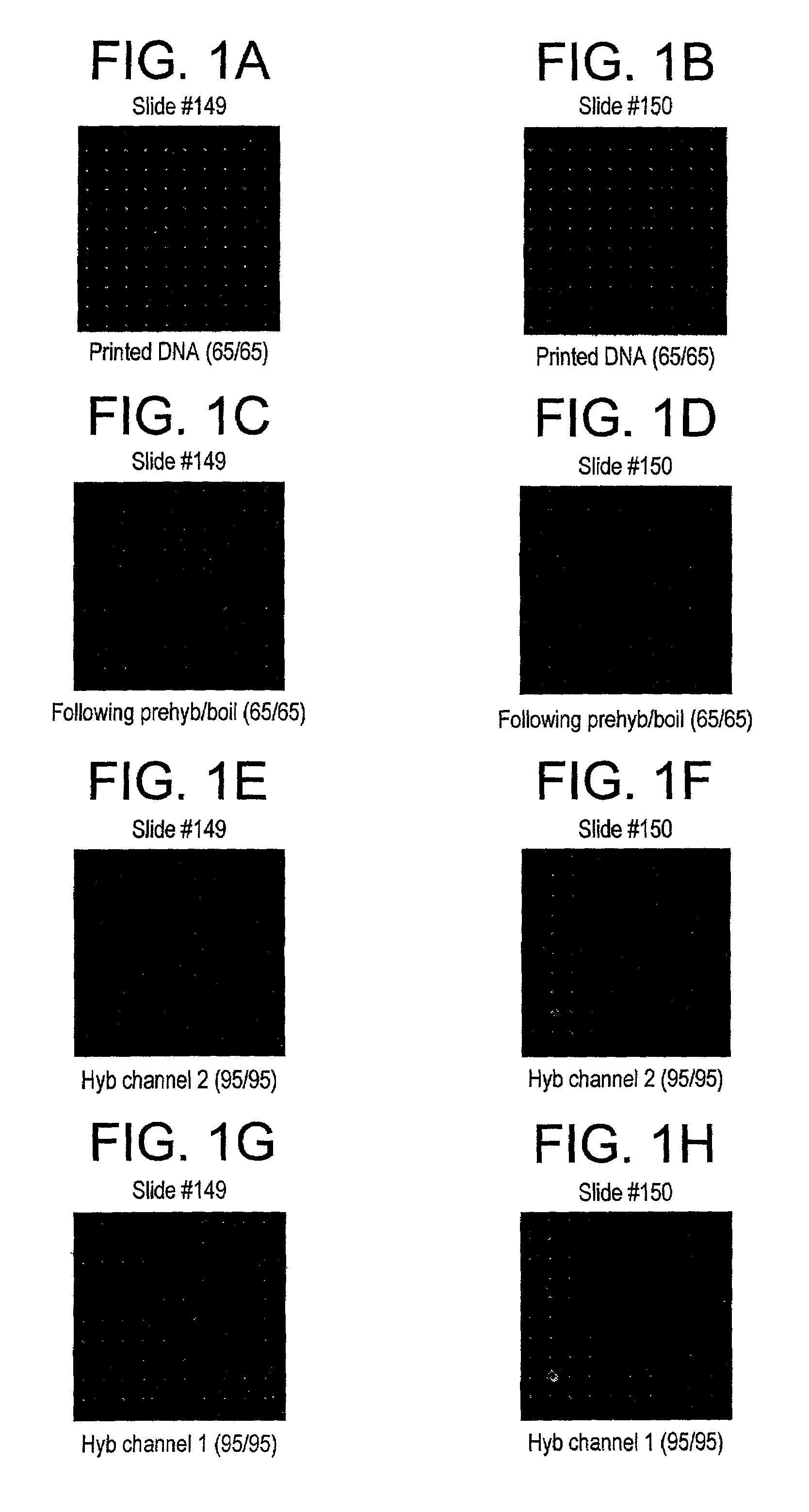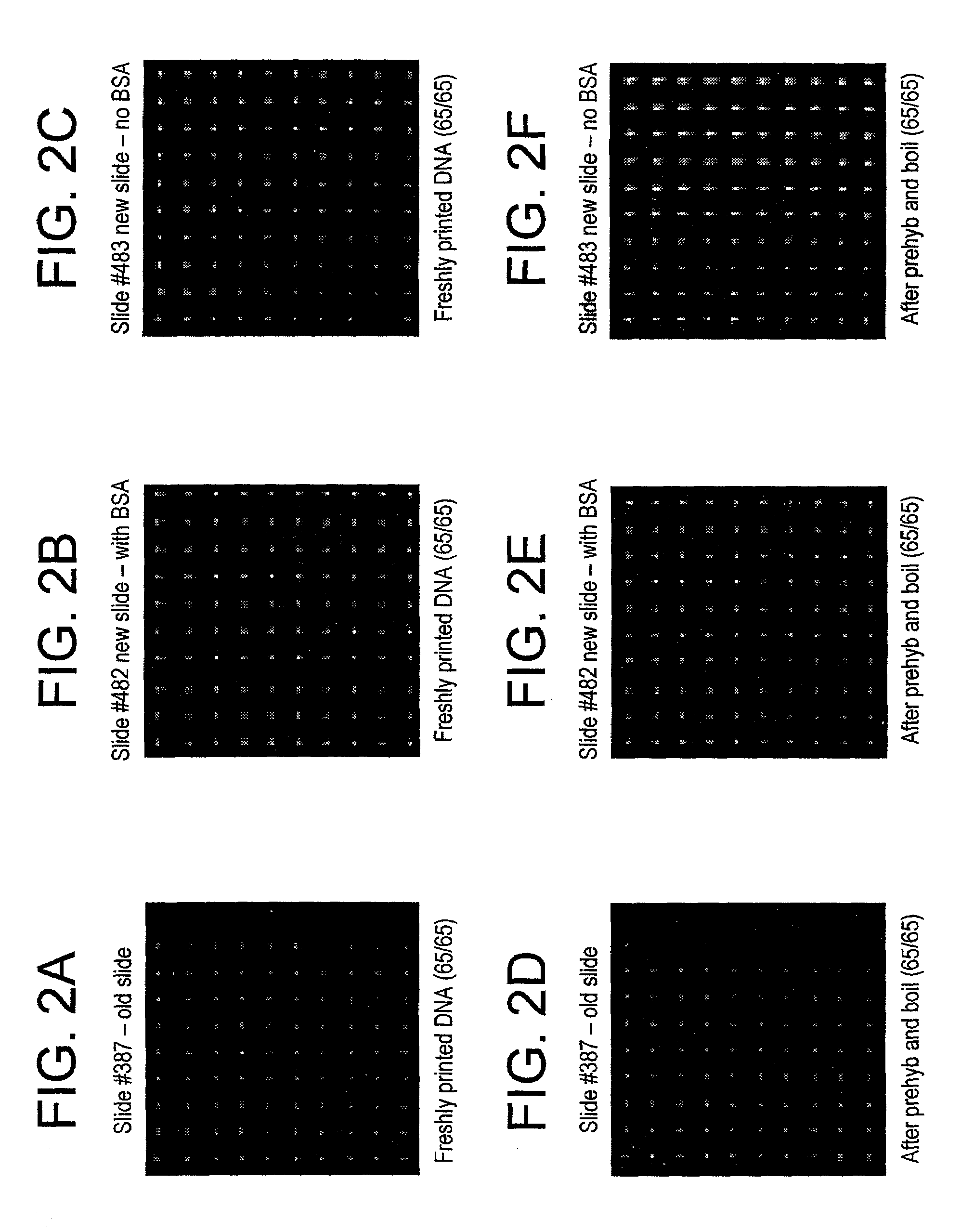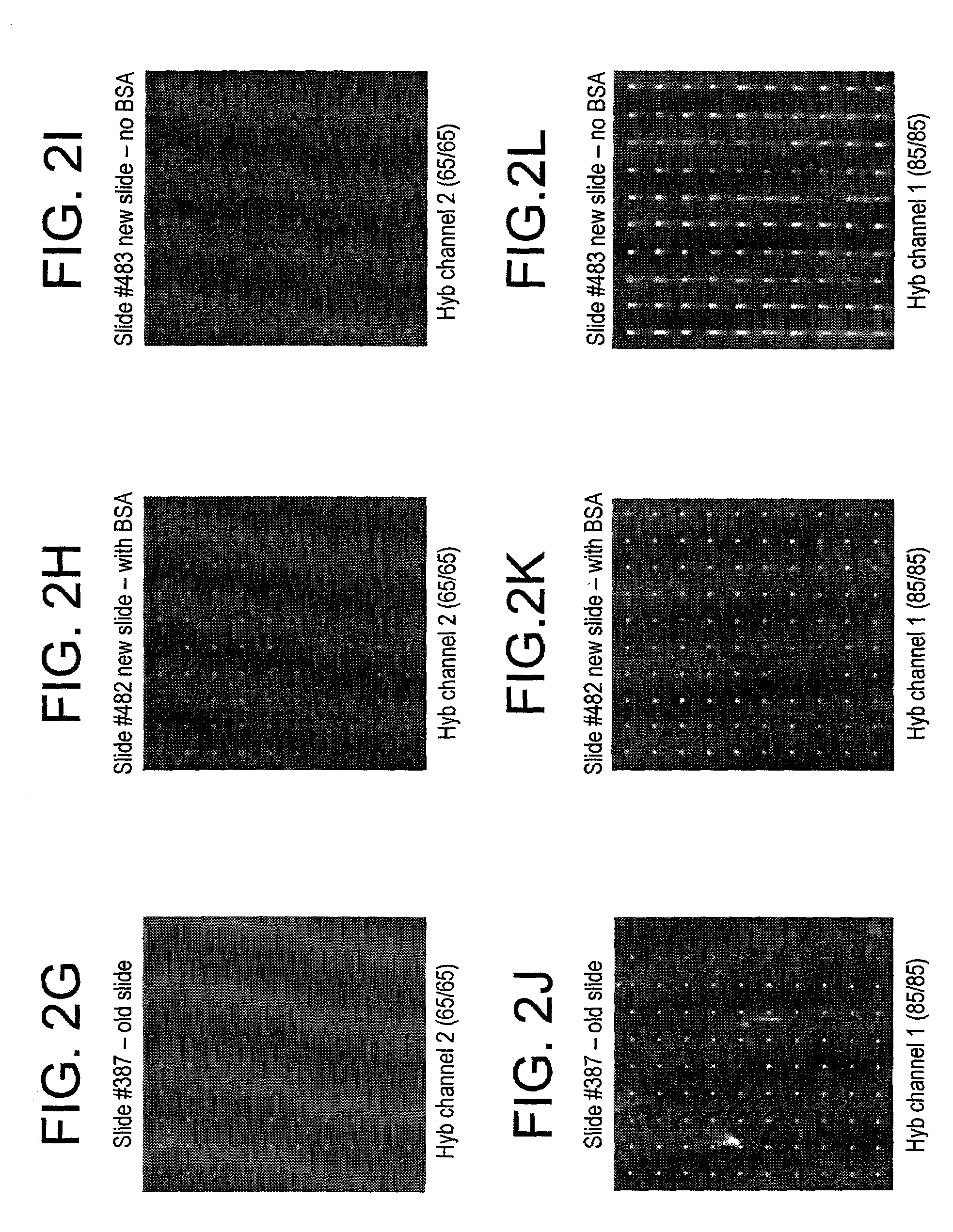Reagent and method for attaching target molecules to a surface
a target molecule and surface technology, applied in the field of reagents and, can solve the problems of reducing the signal from a label on the biomolecule, heterogeneous assays, and commercially available substrates for heterogeneous assays capable of immobilizing biomolecules such as superaldehydeTM from clonetech or 3d linkTM slides from surmodics'
- Summary
- Abstract
- Description
- Claims
- Application Information
AI Technical Summary
Benefits of technology
Problems solved by technology
Method used
Image
Examples
example 1
[0041]All slides received the pre-treatment. The moisture sensitive procedure applies only to the silanes. The polyarginine was applied to the surface using the aqueous procedure.
Pre-Treatment
[0042]All the slides were subjected to a pre-treatment prior to surface modification with the trialkoxysilane. Because the slides have a non-uniform distribution of surface hydroxyls as well as possible organic contaminants, the slides were put in a staining dish that contained 4N NaOH and were stirred for 1 hour at room temperature. The slides were then removed from the hydroxide solution and dipped into a beaker containing DI water. The slide was agitated for a few seconds then rinsed with methanol. This process was repeated twice. Once all the slides had been washed and rinsed and placed into a clean staining dish, they were put into the oven (100° C. until needed). Just prior to surface modification, the slides were removed from the oven and cooled. The slides were then O2 plasma treated fo...
PUM
| Property | Measurement | Unit |
|---|---|---|
| Interaction | aaaaa | aaaaa |
| Hydrogen bonding enthalpy | aaaaa | aaaaa |
Abstract
Description
Claims
Application Information
 Login to View More
Login to View More - R&D Engineer
- R&D Manager
- IP Professional
- Industry Leading Data Capabilities
- Powerful AI technology
- Patent DNA Extraction
Browse by: Latest US Patents, China's latest patents, Technical Efficacy Thesaurus, Application Domain, Technology Topic, Popular Technical Reports.
© 2024 PatSnap. All rights reserved.Legal|Privacy policy|Modern Slavery Act Transparency Statement|Sitemap|About US| Contact US: help@patsnap.com










